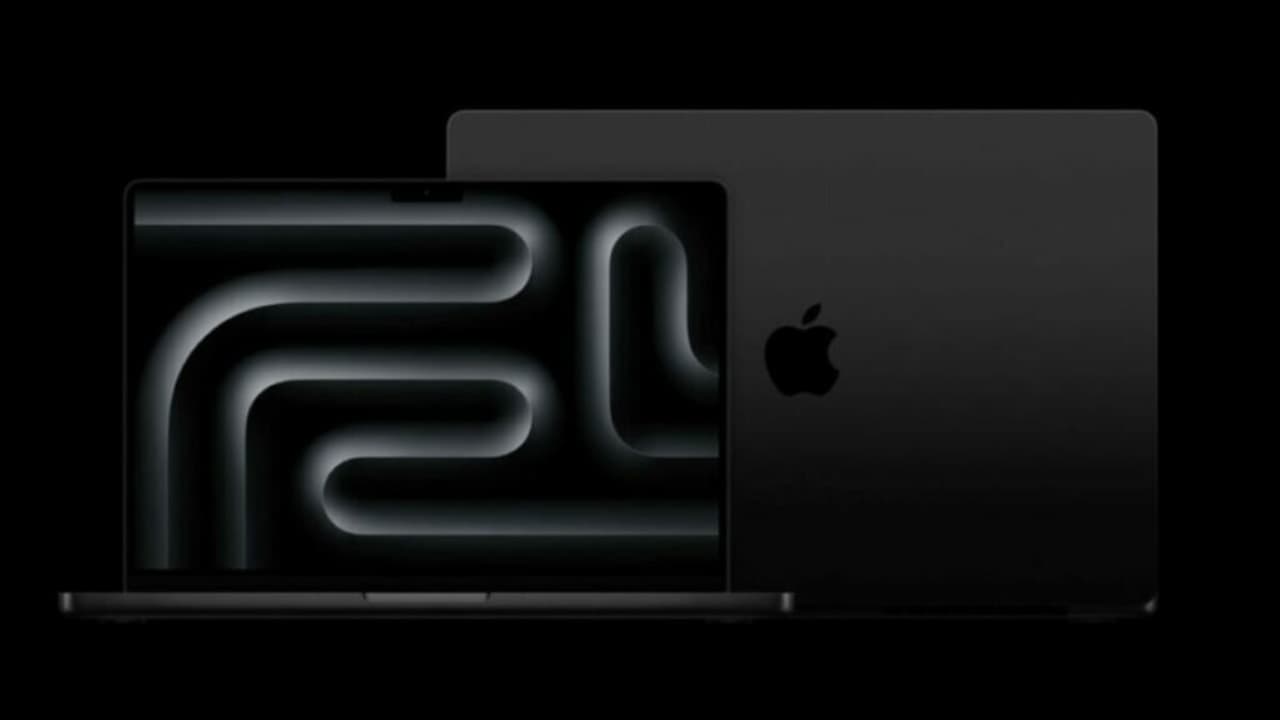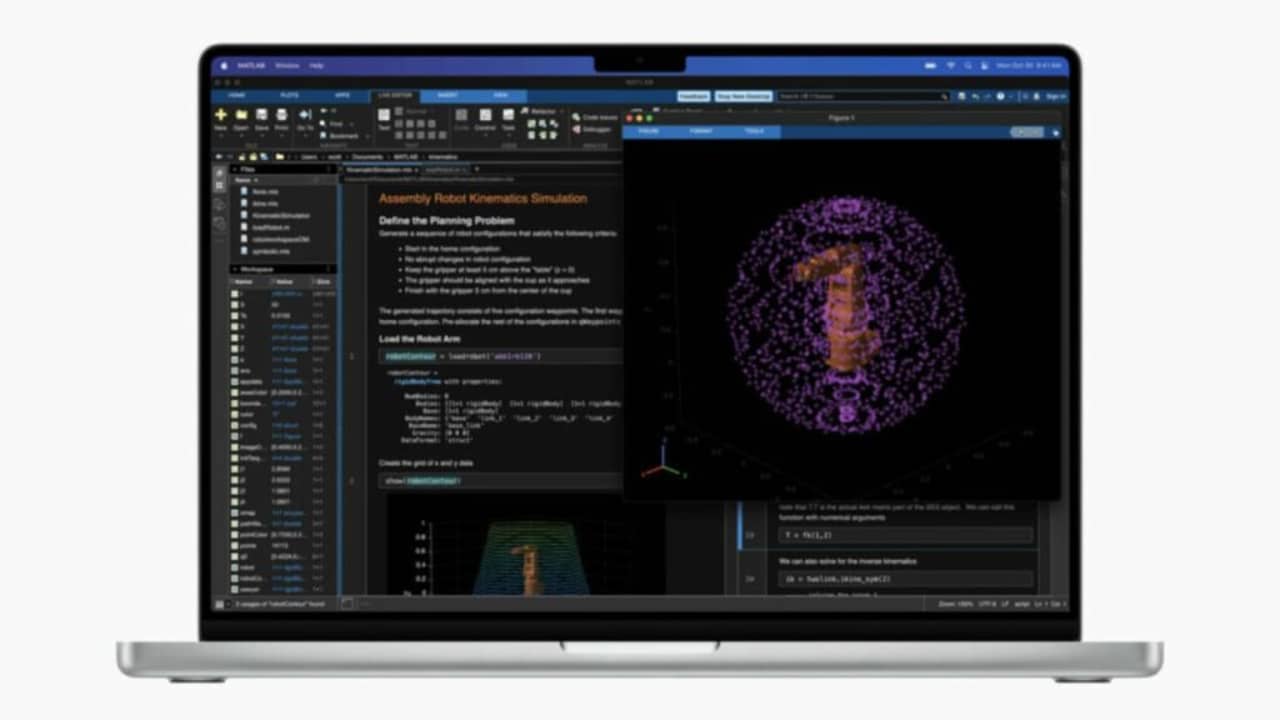Apple held the Scary Fast event yesterday, where we saw several innovations related to Macs. During the event, the company introduced the revolutionary M3, M3 Pro, and M3 Max chips, followed by the new MacBook Pro featuring these chips, and ending with the update of the 24-inch iMac now equipped with the M3 chip. These developments showcase the impressive work Apple is doing in the chip market, setting new standards in performance and efficiency for Mac computers.
The M3 chips: the 3 nanometers are just the beginning
The M3, M3 Pro, and M3 Max chips, introduced at the event, mark a milestone in the semiconductor industry. These chips are the first in the industry designed for personal computers and manufactured using a 3-nanometer process, representing an impressive feat in miniaturization and energy efficiency. This reduction in size allows more transistors to fit in the same space, thereby increasing power and efficiency without increasing the chip’s size or energy consumption.
The M3 chips stand out for their reduced size as well as substantial improvements in performance. The new GPU architecture of these chips offers unprecedented graphics power, making them ideal for intensive tasks such as video editing, graphic design, and gaming. Thanks to Dynamic Caching, the system adapts GPU storage in real-time, directly in the hardware, to maximize performance. This change, among others, enables these chips to provide us with hardware-accelerated mesh shading and ray tracing.

Additionally, the improvements in the CPU and Neural Engine significantly accelerate machine learning tasks and data processing, ensuring a smoother and faster experience. The introduction of a larger unified memory, up to 128 GB, also means that the chips can handle more demanding tasks with ease, enhancing multitasking and overall processing speed.

Apple’s new chip lineup includes the M3 with 25.000 billion transistors and a 10-core GPU, offering 65% better graphics performance than the M1; the M3 Pro with 37.000 billion transistors and an 18-core GPU, outperforming the M1 Pro by 40%; and the M3 Max, boasting an impressive 92.000 billion transistors, a 40-core GPU, and up to 128 GB of unified memory, delivering performance up to 80% faster than the M1 Max. This makes it ideal for intensive professional tasks in graphics and processing, including high-resolution video editing.
MacBook Pro: Reinventing the Professional Laptop
The new MacBook Pro, equipped with the latest generation M3 chips, was the second major announcement of the event. Available in 14 and 16-inch models with a sleek Space Gray finish, the MacBook Pro is designed to exceed all expectations.

The improvements in the GPU and the faster CPU of the M3 chips ensure exceptional performance, solidifying the MacBook Pro as the leader in the professional laptop market. The M3 Pro model excels in creative tasks and programming, being up to 40% faster than its predecessor with M1 Pro and significantly outperforming the Intel model in speed and efficiency. On the other hand, the MacBook Pro with M3 Max is ideal for complex tasks such as machine learning, video editing, and 3D rendering, being up to 2.5 times faster than the M1 Max model and up to 11 times faster than the Intel model.

Putting some numbers on the table, here’s the performance comparison for the 16-inch model between M3 Pro vs M1 Pro and Intel:
- Adobe Photoshop: Up to 3 times faster than Intel; 40% faster than M1 Pro.
- DNA Sequencing (Oxford Nanopore MinKNOW): Up to 20 times faster than Intel; 36% faster than M1 Pro.
- Adobe Premiere Pro: Up to 1.7 times faster than Intel; 30% faster than M1 Pro.
If we compare, always referring to the 16-inch model, the best of M3, the comparison between M3 Max vs M1 Max and Intel looks like this:
- MathWorks MATLAB (dynamic system simulation): Up to 5.5 times faster than Intel; twice as fast as M1 Max.
- Maxon Redshift (rendering): Up to 5.3 times faster than Intel; 2.5 times faster than M1 Max.
- Blackmagic DaVinci Resolve Studio (noise reduction): Up to 2.7 times faster than Intel; 65% faster than M1 Max.
The new MacBook Pro can be pre-ordered starting from October 30th in 27 countries, including Spain, through apple.com and the Apple Store app. Customers will begin receiving it, and it will be available in stores starting from November 7th.

The 14-inch MacBook Pro with the M3 chip starts at €2,029 (€1,899 for education), while the M3 Pro model begins at €2,549 (€2,359 for education). On the other hand, the 16-inch MacBook Pro is available from €3,049 (€2,799 for the education sector).
24-Inch iMac: Beauty and Power in Harmony
To conclude, the 24-inch iMac, already an icon for its design and performance, received an update yesterday with the arrival of the M3 chip. This change ensures performance up to two times faster compared to the previous generation with the M1 chip, providing an unparalleled user experience.

Its slim design, available in the seven original colors, is a testament to Apple’s commitment to aesthetic and functional innovation, demonstrating that beauty and power can harmoniously coexist.
The iMac is established as an essential productivity tool for a wide range of users, including small businesses, students, gamers, and content creators. Compared to its predecessor, it offers significant improvements in speed and performance:
- Safari browsing is up to 30% faster.
- Productivity apps like Microsoft Excel work up to 30% faster.
- Games load faster, and frame rates are up to 50% faster.
- In content creation, you can edit and play up to 12 sequences of 4K video, three times more than before.
- In video editing, projects in Final Cut Pro and Adobe Premier Pro are now up to twice as fast.
- Photo processing in apps like Adobe Photoshop is up to twice as fast.
The new iMac features an impressive 24-inch Retina 4.5K display that offers exceptional viewing thanks to its 11.3 million pixels, wide color gamut, over a billion colors, and 500 nits of brightness, ensuring outstanding sharpness and brightness for tasks such as working on presentations, editing photos, managing businesses, and enjoying movies and series.

The new 24-inch iMac with the M3 chip is available for pre-order starting from October 30 in 27 countries, including Spain, through apple.com and the Apple Store app. It will be in the hands of customers and in stores starting from November 7.
The model with an 8-core GPU starts at €1,619 (€1,559 for education) and comes in colors green, pink, blue, and silver, featuring an 8-core CPU and 256 GB SSD. The model with a 10-core GPU, available from €1,849 (€1,729 for education), offers more colors and additional features such as USB ports, Magic Keyboard with Touch ID, and Gigabit Ethernet.
With these releases, Apple showcases its capability in designing its own chips and creating truly amazing machines with them. From the M3 chips, marking a significant advancement in performance and efficiency, to the MacBook Pro, redefining what can be expected from a professional laptop, and the iMac, blending aesthetics and power, Apple continues to set benchmarks. Benchmarks in the form of new Macs that we can pre-order from today and soon enjoy.


